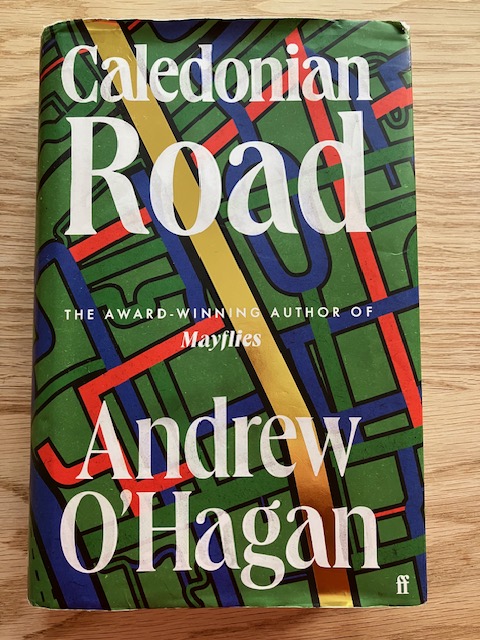
I hadn’t expected this novel to be quite so big – over 600 pages – so big that the author felt he had to preface it with a list of characters in case we forgot along the way who was who. I also hadn’t expected it to be so concerned with society, with quite so many characters, given that his last novel – Mayflies – was short, sensitive and dealt with a friendship between two boys. (My review of Mayflies is here.) But the author is (in real life) a regular contributor to The London Review of Books, and often writes about social issues, including a (very long) piece on Grenfell Tower in the LRB. So society is his thing, after all, and I shouldn’t have been so surprised.
At the centre of the novel is the Caledonian Road in Islington, bounded on one side by the homes of the wealthy and on the other by the homes of the dispossessed. It provides a literary map of the extremes of wealth and poverty which characterise London. And at the centre is Campbell Flynn in Thornhill Square, born (like O’Hagan) in Glasgow to parents of modest means but who has made it big in the cultural world of the capital (and who has married the daughter of the Countess of Paxford). He links all the characters in the novel: he has a passing acquaintance with Aleksandr Bykov, the Russian oligarch who is using London as his playground and who is buying social cachet and acceptance by deploying his immense wealth; he becomes close to one of his students, Milo Mangasha, a social activist, whose Polish girlfriend provides a link to the East European low life dealing in drugs and people-smuggling. And then there’s his friendship with William Byre, a university friend who has taken money from the Russians, sailed much too close to the wind, and who is about to pay the price.
But the problem is that the novel begins with the exposition of all these characters, who are unpleasant, or clichés, or both. I wasn’t even sure if it was the characters whom I disliked or (much worse) the author. Was he trying to impress by telling me that Campbell Flynn, the boy from Glasgow, now drinks at Claridges, eats lunch at Fortnum and Mason’s, and stays at the Danieli in Venice when he visits his mother-in-law (who happens to be a dowager duchess)? And does he expect us to be stunned with awe at his description of Campbell’s university office, which contains a ‘red Malaka rug … from a sale of the belongings of Bunny Roger’ (unfortunately, I don’t know who on earth Bunny is, and even what gender they might be, but I’m sure I’m meant to know); a green teapot which had been ‘a present in the 1990s from Anne Yeats, daughter of the poet’; and ‘a drinks trolley, from which, in a direct steal from Anthony Blunt, he often served [his students] whisky in crystal tumblers’? Does the author really think that you can create character through product placement?
I almost discarded the novel at this stage, and it is a long stage – more than two hundred pages of a six-hundred-page novel, so you can see that carrying on required a certain amount of determination. But then I began to feel glimmers of hope – some Polish drug dealers injected a bit of welcome reality. And it became clear that the exposition sets up the loom for a piece of weaving that is intricate and engaging, and in which it becomes clear that everything and everybody is connected, and that together we form society, and aren’t just a collection of individuals.
And then the ending(s): there’s a lot to wrap up. It’s marvellous. A lot of people get some sort of come-uppance, which is enormously satisfying. Some characters escape more or less scot-free, including the Duke, Campbell’s brother-in-law (no surprise). But it’s not always so simple, and there is tragedy too: someone is imprisoned for a murder (gang related) at which he was present but which he did not commit. Milo and his girlfriend escape to a Scottish island, funded by blackmailing the Duke (so perhaps he didn’t get off scot-free after all). The Russians retreat to Moscow. Campbell. Ah Campbell. He ends on a bit of an ambiguous note.
It’s as if the author started with the cliché, the veneer, about each character (and there are a lot of them) and then went on to add nuance, understanding, and a sense of the difficulties underlying even apparent privilege. But beware: reviewers are left with the glow of the ending – the beginning of this huge novel seems, by the time you have come to the end, so long ago – and might fail to hold the author to account for the what he puts reader through at the outset.


